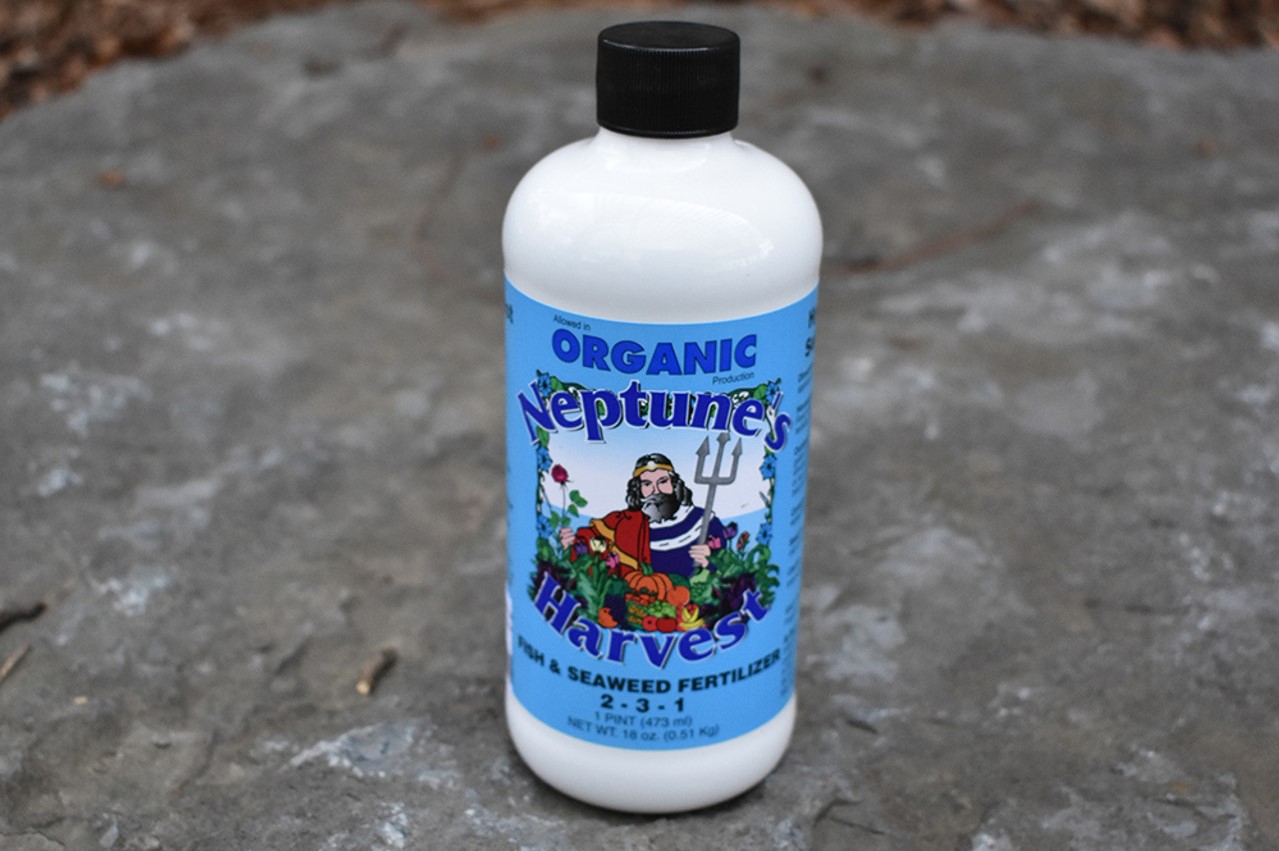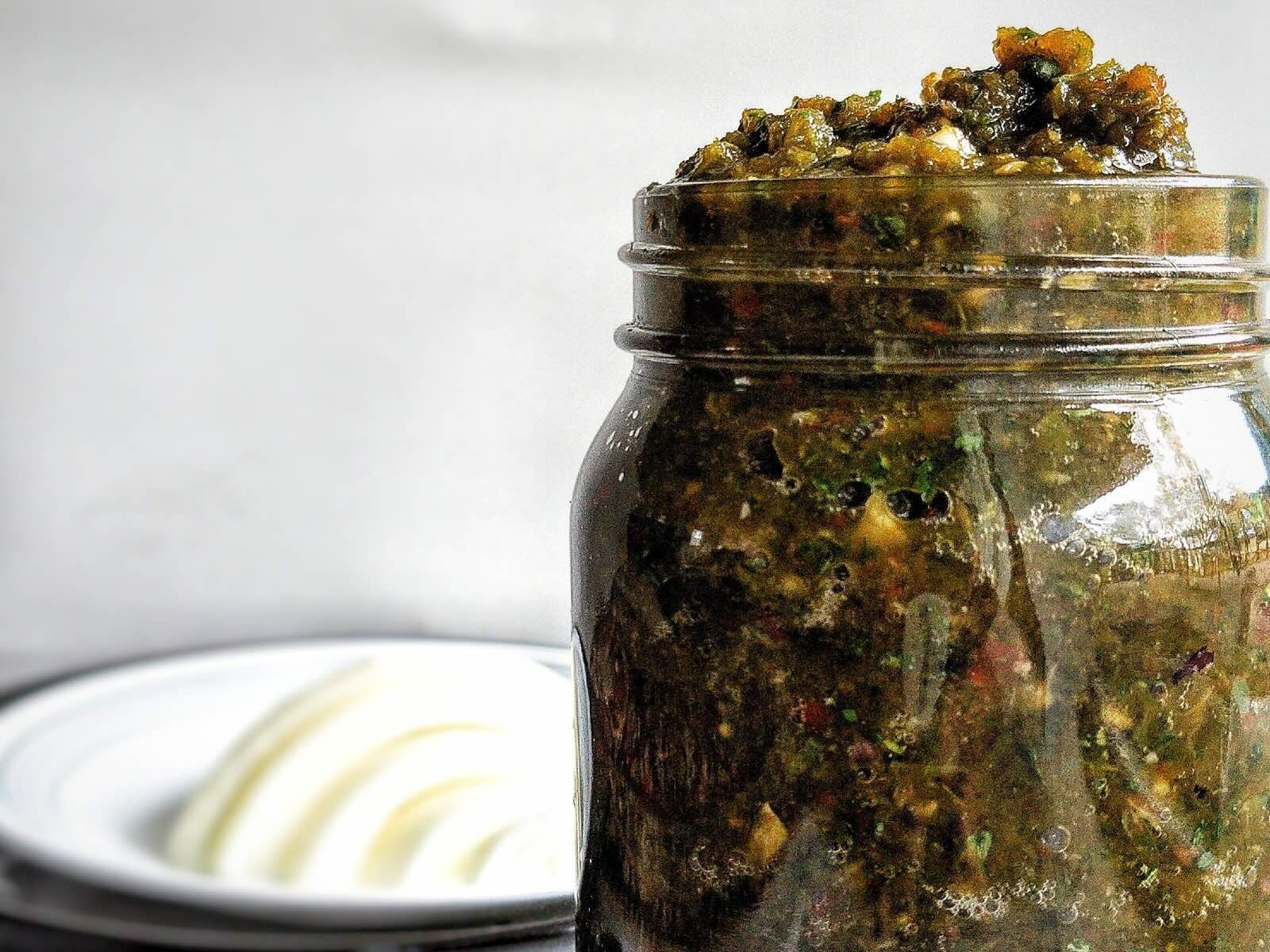

Articles
How To Store Seaweed
Modified: December 7, 2023
Learn how to properly store seaweed with our informative articles. Discover the best methods to maintain freshness and quality for all your seaweed storage needs.
(Many of the links in this article redirect to a specific reviewed product. Your purchase of these products through affiliate links helps to generate commission for Storables.com, at no extra cost. Learn more)
Introduction
Seaweed, also known as sea vegetables, has been consumed for centuries in various cuisines around the world. Not only is it highly nutritious, packed with essential vitamins and minerals, but it also offers incredible health benefits, making it an increasingly popular ingredient in modern kitchens. Whether you’re a seaweed enthusiast or a health-conscious individual looking to incorporate more nutrient-rich foods into your diet, knowing how to properly store seaweed is crucial to maintaining its quality and flavor.
In this article, we will explore the benefits of storing seaweed, discuss different types of seaweed that are commonly used in cooking, and provide detailed instructions on how to choose, prepare and store seaweed using various methods. By understanding the best practices for seaweed storage, you can ensure that your seaweed remains fresh, flavorful, and ready to use whenever you’re craving a taste of the ocean.
Key Takeaways:
- Properly storing seaweed preserves its nutrients, flavor, and texture, offering convenience, cost savings, and reduced waste. Whether dried, frozen, or pickled, following best practices ensures a fresh supply for culinary exploration.
- Choosing high-quality seaweed, proper preparation, and utilizing various storage methods are essential for maintaining seaweed’s freshness and nutritional benefits. Experimenting with drying, freezing, and pickling techniques allows for versatile culinary exploration.
Read also: 9 Best Seaweed Fertilizer for 2024
Benefits of Storing Seaweed
Storing seaweed properly not only helps to extend its shelf life but also preserves its nutritional value and keeps it fresh for future use. Here are some key benefits of storing seaweed:
- Retains Nutritional Value: Seaweed is known for its high concentration of vitamins, minerals, and antioxidants. By storing it correctly, you can ensure that these valuable nutrients are preserved, allowing you to reap the maximum health benefits.
- Convenience and Versatility: Storing seaweed enables you to have a readily available ingredient at any time. This convenience allows you to incorporate seaweed into a variety of dishes such as salads, soups, stir-fries, and even smoothies.
- Cost Savings: Buying seaweed in bulk and storing it properly can be cost-effective, especially if you use it regularly in your cooking. Rather than buying small packages of seaweed each time you need it, having a stockpile ensures that you always have a supply on hand when you need it, saving you money in the long run.
- Reduced Waste: Proper storage methods can significantly reduce waste by preventing spoilage and keeping seaweed fresh for an extended period. By avoiding unnecessary food waste, you are not only saving money but also contributing to a more sustainable and environmentally friendly lifestyle.
By understanding the benefits of storing seaweed, you can make the most of this versatile ingredient and enjoy its nutritional goodness for longer periods.
Choosing and Preparing Seaweed for Storage
When it comes to storing seaweed, selecting high-quality seaweed and properly preparing it before storage is essential. Follow these steps to ensure that your seaweed stays fresh and flavorful:
- Choose Fresh Seaweed: Look for seaweed that is vibrant in color, with a fresh sea-like aroma. Avoid seaweed that appears discolored, slimy, or has a strong unpleasant smell, as these are signs of deterioration.
- Rinse Thoroughly: Before storing, rinse the seaweed thoroughly under cold running water to remove any sand, dirt, or debris. Gently rub the seaweed with your hands to ensure all impurities are removed.
- Remove Excess Water: After rinsing, gently squeeze the seaweed to remove excess water. If the seaweed is too wet, it can lead to spoilage during storage.
- Trim and Remove Stems: Depending on the type of seaweed, you may need to trim or remove the tough stems before storage. This step helps to improve the texture and flavor of the seaweed in dishes.
- Cut into Desired Size: If you prefer smaller pieces of seaweed for ease of use or specific recipes, you can cut them into smaller, more manageable sizes. However, if you plan to use whole pieces, there is no need for further cutting.
By carefully choosing and properly preparing the seaweed, you are setting the foundation for successful storage and ensuring that your seaweed stays fresh and delicious for an extended period.
Various Storage Methods
There are several different methods available for storing seaweed, each with its own advantages and considerations. Here are three common methods for storing seaweed:
- Drying Seaweed: Drying seaweed is one of the most traditional and effective ways to store it. After rinsing and removing excess water, spread the seaweed out in a single layer on a clean surface such as a drying rack or baking sheet. Place the seaweed in a well-ventilated area away from direct sunlight and allow it to air-dry. You can also use a food dehydrator set to a low temperature. Once the seaweed is completely dry and crisp, store it in an airtight container or airtight bag to maintain its freshness.
- Freezing Seaweed: Freezing seaweed is an excellent option for long-term storage. Start by blanching the seaweed in boiling water for a brief moment, then transfer it to an ice bath to stop the cooking process. Drain the seaweed well and pat it dry. Next, portion the seaweed into freezer-safe bags or containers, removing as much air as possible before sealing. Label the bags or containers with the date and store them in the freezer. Frozen seaweed can last for several months and thaws quickly when needed for cooking.
- Pickling Seaweed: Pickling seaweed can provide a tangy and flavorful storage method. Create a pickling solution using vinegar, salt, sugar, and any desired herbs or spices. Bring the solution to a boil, then pour it over the prepared seaweed in a glass jar. Allow the seaweed to cool at room temperature before sealing the jar with an airtight lid. Place the jar in the refrigerator and let it pickle for at least a few days before consuming. Pickled seaweed can be stored in the refrigerator for a few weeks.
Each storage method has its own unique characteristics, and the choice of the method depends on personal preference, availability of equipment, and intended use. Experimentation with different methods can help you discover the optimal way to store seaweed for your needs.
Drying Seaweed
Drying seaweed is an effective method for preserving its flavor and nutrients. Here’s a step-by-step guide on how to dry seaweed:
- Prepare the seaweed: Start by rinsing the seaweed thoroughly under cold running water to remove any impurities. Gently rub the seaweed to ensure all dirt and debris are removed. Remove any tough stems or damaged parts to improve the quality of the seaweed.
- Drying method: There are a few different methods you can use to dry the seaweed:
- Air-drying: Lay the seaweed in a single layer on a clean surface such as a drying rack or baking sheet. Place it in a well-ventilated area away from direct sunlight. Turn the seaweed occasionally to ensure uniform drying.
- Food dehydrator: If you have a food dehydrator, lay the seaweed on the drying trays, making sure to leave enough space for air circulation. Set the dehydrator to a low temperature, around 110°F (43°C), and let it dry for several hours or until it becomes crisp.
- Check for dryness: The drying time can vary depending on the type of seaweed and the drying method used. The seaweed should be completely dry and brittle to the touch. If it still feels slightly moist, continue drying it until it reaches the desired dryness.
- Storage: Once the seaweed is fully dried, transfer it to an airtight container or an airtight bag. Make sure to remove any excess air from the container or bag before sealing it. Store the dried seaweed in a cool, dry place away from direct sunlight. Properly stored dried seaweed can last for several months.
Dried seaweed can be rehydrated by soaking it in water for a few minutes before using it in recipes. It adds a unique flavor and texture to soups, stews, salads, and stir-fries. Experiment with different types of seaweed and drying methods to find your preferred combination.
Store seaweed in a cool, dry place away from direct sunlight to maintain its freshness and flavor. Airtight containers or resealable bags can help prevent moisture and air exposure.
Freezing Seaweed
Freezing seaweed is a convenient method to store it for extended periods while preserving its flavor and nutritional value. Follow these simple steps to freeze seaweed:
- Blanch the seaweed: Start by blanching the seaweed in boiling water for a brief moment – about 30 seconds to 1 minute. Blanching helps to preserve the color, texture, and nutrients of the seaweed.
- Transfer to an ice bath: Immediately after blanching, transfer the seaweed to an ice bath to cool it down rapidly and stop the cooking process. This step helps to maintain the seaweed’s vibrant color and crispness.
- Drain and pat dry: Once the seaweed has cooled, drain it well and gently pat it dry with paper towels. Excess moisture can cause freezer burn and negatively affect the quality of the seaweed during storage.
- Portion and package: Divide the seaweed into portion sizes that you’re likely to use in one go. Place the seaweed into freezer-safe bags or airtight containers, removing as much air as possible to prevent freezer burn. Label the bags or containers with the date.
- Freeze: Place the packed seaweed in the freezer, making sure it lies flat to maximize space efficiency. Avoid stacking or squishing the seaweed. Frozen seaweed can last for several months in the freezer.
When you’re ready to use the frozen seaweed, there’s no need to thaw it. You can directly add it to soups, stews, stir-fries, or other dishes. The seaweed will quickly thaw and impart its flavor and texture to the dish.
Freezing seaweed is an excellent option for those who want to stock up on seaweed or have an abundant supply on hand. It’s a convenient way to preserve the freshness of the seaweed and enjoy its nutritional benefits throughout the year.
Pickling Seaweed
Pickling seaweed is a delicious and tangy method of preserving it, imparting a unique flavor profile. Here’s a step-by-step guide on how to pickle seaweed:
- Prepare the seaweed: Start by rinsing the seaweed thoroughly under cold running water to remove any impurities. Gently rub the seaweed to ensure all dirt and debris are removed. Remove any tough stems or damaged parts to improve the quality of the seaweed.
- Create the pickling solution: In a saucepan, combine vinegar, salt, sugar, and any desired herbs or spices. Popular choices include rice vinegar, soy sauce, ginger, garlic, and chili flakes. Bring the mixture to a boil, stirring until the salt and sugar are dissolved. Let the pickling solution cool to room temperature.
- Pickle the seaweed: Place the prepared seaweed in a clean glass jar and pour the cooled pickling solution over it. Make sure the seaweed is completely submerged in the liquid. Seal the jar with an airtight lid.
- Pickle for the desired time: Let the seaweed pickle in the refrigerator for at least a few days to allow the flavors to develop. The longer it pickles, the stronger the flavor will become. Taste it occasionally to determine the desired level of tanginess.
- Storage: Once the seaweed has achieved the desired level of pickling, you can store it in the refrigerator. The pickled seaweed can last for a few weeks when properly stored.
Pickled seaweed adds a unique and tangy flavor to various dishes. Use it as a condiment, garnish, or ingredient in salads, sandwiches, sushi rolls, or as part of a savory snack. The pickling process enhances the seaweed’s natural umami flavor, creating a versatile and delicious addition to your culinary repertoire.
Tips for Proper Seaweed Storage
To ensure that your stored seaweed remains fresh, flavorful, and safe to consume, consider the following tips for proper seaweed storage:
- Choose high-quality seaweed: Select seaweed that is fresh, vibrant in color, and free from any signs of spoilage or damage.
- Keep it dry: Moisture can cause seaweed to deteriorate quickly. After rinsing, make sure to remove excess water by gently squeezing or patting dry with a towel.
- Use airtight containers: To preserve the freshness of dried or pickled seaweed, store it in airtight containers or bags that prevent moisture and air from entering.
- Avoid exposure to light and heat: Seaweed is sensitive to light and heat, which can degrade its quality. Store it in a cool, dark place away from direct sunlight.
- Label and date the storage containers: Proper labeling and dating can help you keep track of the seaweed’s freshness and prevent consuming expired or rancid seaweed.
- Rotate your stock: If you regularly use seaweed, make sure to rotate your stock, using older seaweed first and replenishing with fresh supplies. This helps to ensure that you always have the best quality seaweed on hand.
- Check for signs of spoilage: Before using stored seaweed, inspect it for any signs of spoilage such as a foul smell, mold, sliminess, or off-color. If you notice any of these signs, discard the seaweed to avoid the risk of consuming spoiled food.
By following these tips, you can maintain the quality and flavor of your seaweed, allowing you to enjoy its nutritional benefits and culinary versatility for an extended period.
Conclusion
Learning how to properly store seaweed is essential in maintaining its freshness, flavor, and nutritional value. Whether you prefer dried, frozen, or pickled seaweed, each storage method offers its own unique benefits and considerations.
Drying seaweed is a traditional method that allows you to preserve its nutrients and enjoy its crisp texture. By air-drying or using a food dehydrator, you can easily store dried seaweed for an extended period. Freezing seaweed is a convenient option that ensures its long-term preservation without compromising its taste or quality. Blanching and freezing the seaweed in portion sizes allows for easy thawing and immediate use in various recipes. Pickling seaweed provides a tangy flavor and a versatile ingredient for incorporating into salads, sushi rolls, and savory dishes.
Regardless of the storage method you choose, it’s important to follow proper preparation techniques such as rinsing the seaweed, removing excess water, and trimming it if necessary. These steps not only improve the seaweed’s quality but also contribute to its longevity in storage.
Remember to store seaweed in airtight containers or bags, away from heat, light, and moisture. Proper labeling and rotation of stock will help you keep track of freshness and ensure you use the oldest seaweed first.
Storing seaweed properly offers several benefits, including retaining its nutritional value, convenience, cost savings, and reduced food waste. By incorporating seaweed into your diet, you can enjoy its plethora of health benefits, including vitamins, minerals, and antioxidants that support overall well-being.
So, whether you’re a seaweed enthusiast or simply want to introduce this nutrient-rich ingredient into your culinary repertoire, mastering proper seaweed storage techniques will ensure that you always have a supply of fresh, flavorful seaweed to enhance your meals and embark on a delicious journey into the world of sea vegetables.
Frequently Asked Questions about How To Store Seaweed
Was this page helpful?
At Storables.com, we guarantee accurate and reliable information. Our content, validated by Expert Board Contributors, is crafted following stringent Editorial Policies. We're committed to providing you with well-researched, expert-backed insights for all your informational needs.















0 thoughts on “How To Store Seaweed”